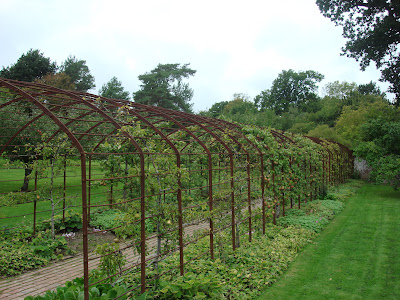Brief information about Rudyard Kipling:
Rudyard Kipling was an English short-story writer, poet, and novelist. Rudyard Kipling was born in British India in 1865 and died in 1936. He is best known for his works of fiction The Jungle Book and Rudyard Kipling poems, including Mandalay, Gunga Din and If.
Rudyard Kipling received the Nobel Prize in Literature in 1907 and is regarded as a major "innovator in the art of the short story". Rudyard Kipling is the first English language writer to receive Nobel Prize for Literature, and to date he remains its youngest recipient.
Brief information about Bateman’s:
Bateman’s is a 17th-century house surrounded by the wooded landscape of the Sussex Weald. Six brick columns form a massive central chimneystack above the gabled facades. Today the rooms remain much as they were when the Kipling family lived there.
My personal experience:
The day I visited Bateman’s was not a weekend or a holiday, and the weather was not good, quite cold and cloudy. I thought there would be no visitors. However when I arrived Bateman’s parking and saw many cars I realised that I was wrong. Bateman’s parking is big and free.
(the reception)
The reception, next to the parking, is quite small, and just has one staff. At the same time the reception is also a shop selling fruits grown in the garden of Bateman’s. After showing my National Trust membership card I started my visit to Bateman’s from the Orchard Garden.
1. The Orchard Garden
The Orchard Garden is situated at the rear part of Bateman’s and lies on the gently sloping side of the Dudwell valley. Accessing via the main visitor entrance I saw a large expanse of lawn interspersed with an array of fruit trees. They are relatively current but are within a much earlier structural framework provided by old brick walls accompanied by straight tarmac paths. Because it is in autumn you can see pears and apples on these trees. I was particularly impressive with the pear trees. To be honest it was my first time to see so many pear trees.
At the bottom of the slope, in the eastern corner of the Orchard Garden is the Pear Alley, which was designed by Rudyard Kipling and has been retained as a centrepiece. 
(the Pear Alley)
Incidentally, adjacent to the orchard, fringing the northerly path is a long, wide border of herbs. At the north eastern end of the orchard is the kitchen garden that provided food and cut flower for Kipling family.
2. The Rolls Royce
On leaving the Orchard Garden I walked in a garage, where one Rolls Royce, Phantom I, is displayed. Kipling bought the car in 1928. That said Kipling was one of those pioneer motorists for whom a short drive in a 'horseless carriage' was an adventure. He owned a number of Lanchesters and Rolls-Royces. There is an information panel on the wall that lists the technological index of Phantom I. Because it’s a classical car so you can only see it through glass.
(The Rolls Royce)
3. The House Bateman's is built of local sandstone, quarried from a site across the lane. The tiles are all baked from Wealden clay. My first impression of the house is peaceable and comfortable.
Walking in the short entrance I came in the Hall where visitors would be received. The 17th century panelling, the simple stone doorways and the plain moulded fireplace of this room were what first attracted Rudyard Kipling to Bateman’s. There is a mirror in gilt carved wood frame surmounted by a gilt eagle. The balls round the frame represent the number of states in the Union at that time.
(the Hall)
At the Inner Hall there are Bronzed plaster reliefs that depicted Mowgli and other characters from Rudyard Kipling’s early books. Interestingly those reliefs were made by Kipling’s father, John Lockwood Kipling, who was a ceramics designer. I can see the Indian culture from these reliefs.
(the Inner Hall)
continuous......you will see Rudyard Kipling soon.







